Hugo! (32 page)
Authors: Bart Jones

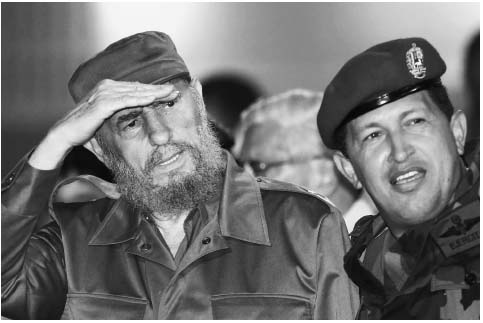
Fidel Castro turned into Chávez's main mentor, provoking worries among Venezuela's upper classes that
Chávez planned to turn the oil giant into a twenty-first-century version of the Communist-run island. But
while Chávez and Castro were allies, sharp differences separated their social experiments. (AP/Wide
World Photos)
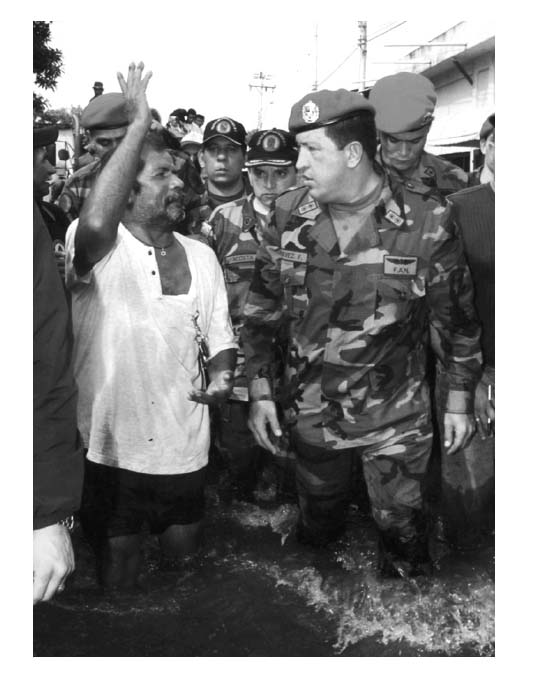
When floods hit the frontier town of
Guasdualito in Apure state in 2002, Chávez
visited to listen to residents' concerns and
help direct relief efforts. (Agencia Bolivariana
de Noticias)
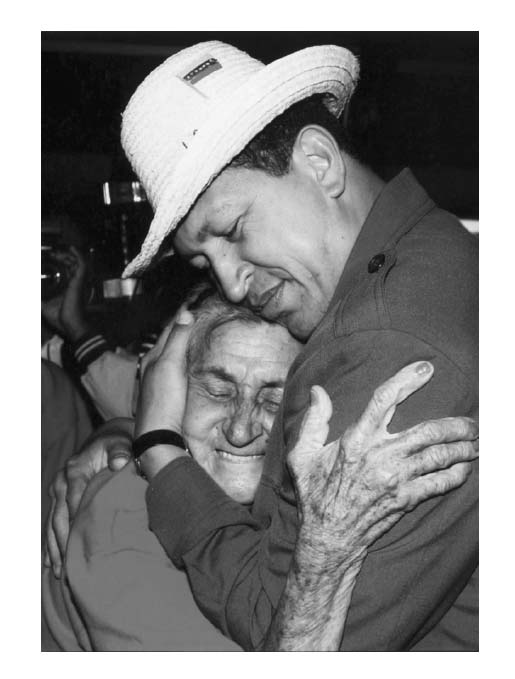
Chávez's empathy with Venezuela's majority
poor was legendary and flowed naturally out of
his own upbringing in poverty in Barinas state.
He hugged an old woman on Margarita Island
in 2001. (Agencia Bolivariana de Noticias)
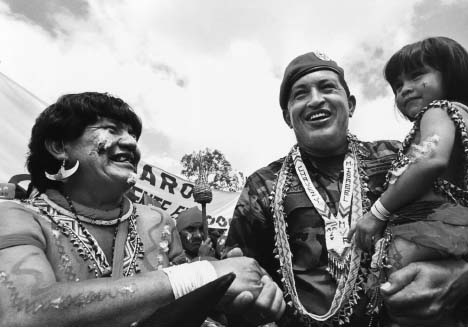
Chávez reached out to Venezuela's five hundred
thousand indigenous people, pushing for
a new constitution that recognized their languages
and economic systems, and reserving
three spots in the Constitutional Assembly for
representatives from their tribes. Still, his environmental
policies early in his presidency did
not please some indigenous leaders. In 1999 he
visited members of the Piaroa tribe in Bolivar
state. (Agencia Bolivariana de Noticias)
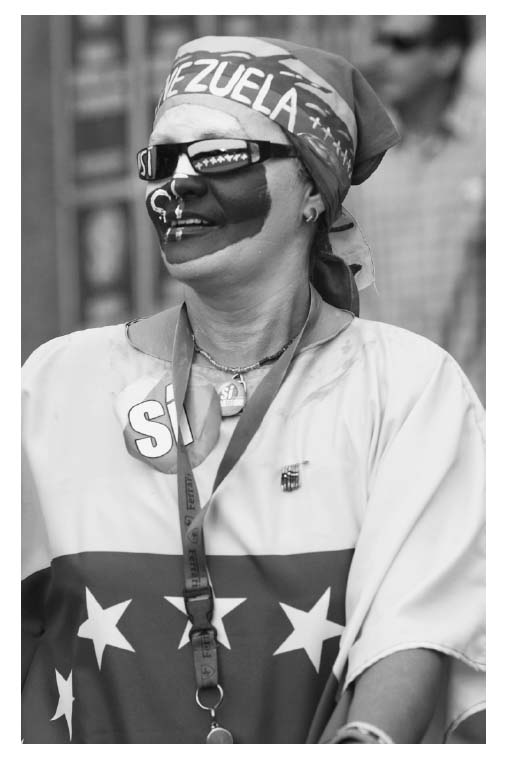
Chávez provoked rabid hatred among many
people in Venezuela's moneyed classes who
believed he was destroying the country with
a half-baked experiment in communism. A
protestor painted herself in the colors of
Venezuela's flag in the days before a recall
referendum in August 2004, during which
Chávez's presidency was on the line. (Noah
Friedman-Rudovsky)
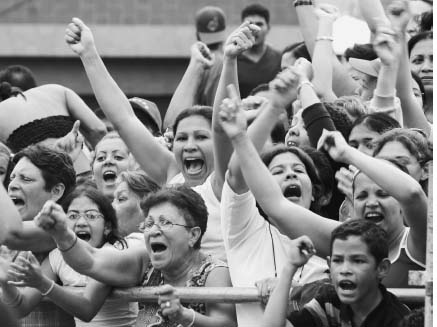
In Venezuela's barrios and in the impoverished
countryside, Chávez generated wild enthusiasm.
Fans cheered him in August 2004 as he
went to cast his vote in the recall referendum.
(Noah Friedman-Rudovsky)
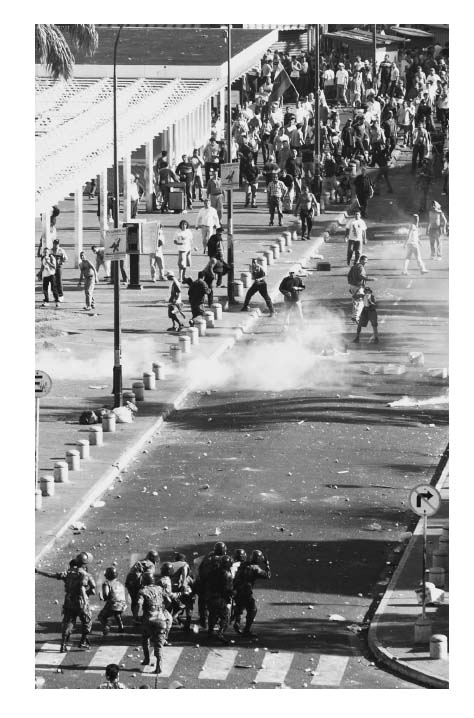
After opposition leaders illegally changed the
route of a massive anti-Chávez protest march on
April 11, 2002, protestors closed in on Miraflores
Palace and clashed with National Guardsmen.
While most protestors were peaceful, some
tossed bottles, rocks, chairs, tubes, watermelon
rinds, and pieces of brick they tore off the nearby
Fermín Toro High School. National Guardsmen
responded with tear gas and in some cases
bullets. On nearby Baralt Avenue and Llaguno
Bridge, both opposition marchers and Chávez
supporters fell injured or dead — many from
shots fired by snipers during the most controversial
and defining moment of Chávez's presidency.
(Agencia Bolivariana de Noticias)
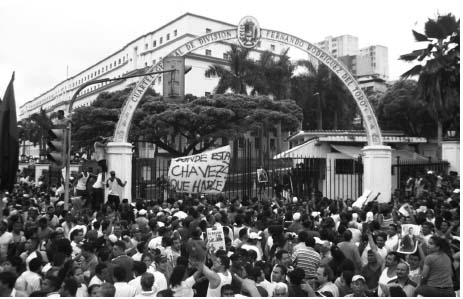
After Chávez disappeared from public view for nearly two days during the 2002 coup, thousands of his
supporters streamed down from Caracas's barrios and surrounded the Miraflores Presidential Palace to
demand his return. Some hung a sheet on the gates outside the palace asking, "Where is Chávez? Let
him speak." Chávez would soon make a miraculous return to the palace and the presidency. (Gustavo
Frisneda/Cadena Capriles)
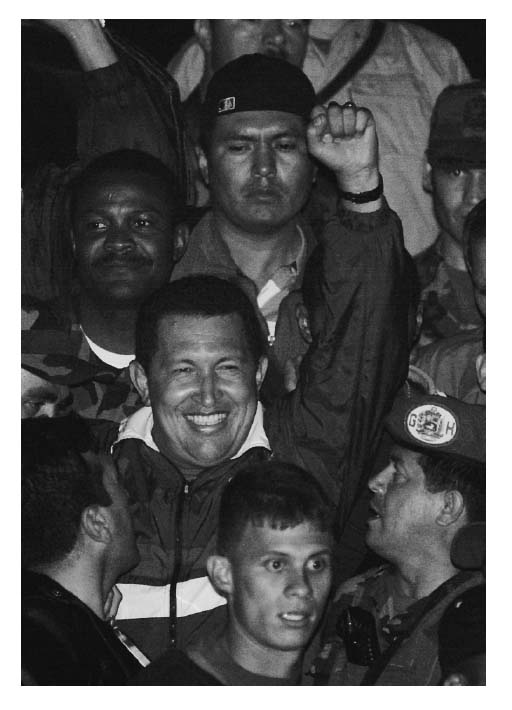
Chávez disappeared for two days during the
April 2002 coup, and made a miraculous
return to the Miraflores Presidential Palace
early in the morning of April 14, 2002. For his
supporters, it was as if he had risen from the
dead. (AP/Wide World Photos)
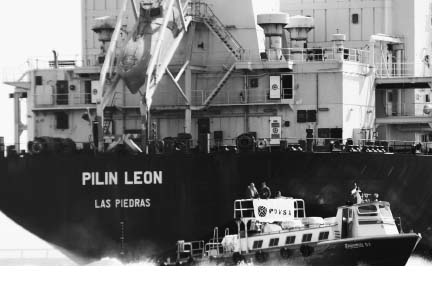
Chávez opponents paralyzed the oil industry in December 2002 in an attempt to strangle the economy and
force him out of office. Massive oil tankers like the
Pilín León
dropped anchor and refused to transport oil.
Chávez had to pull captains out of retirement to get the ships moving again. (AP/Wide World Photos)
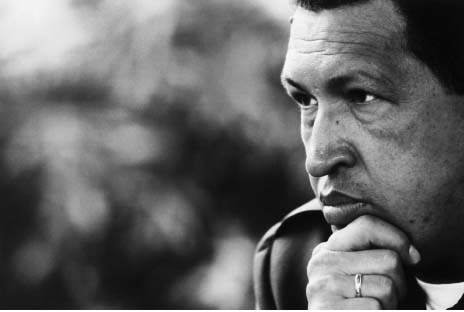
Chávez in a thoughtful moment during a
Hello, President
program in
2001. (Agencia Bolivariana de Noticias)
